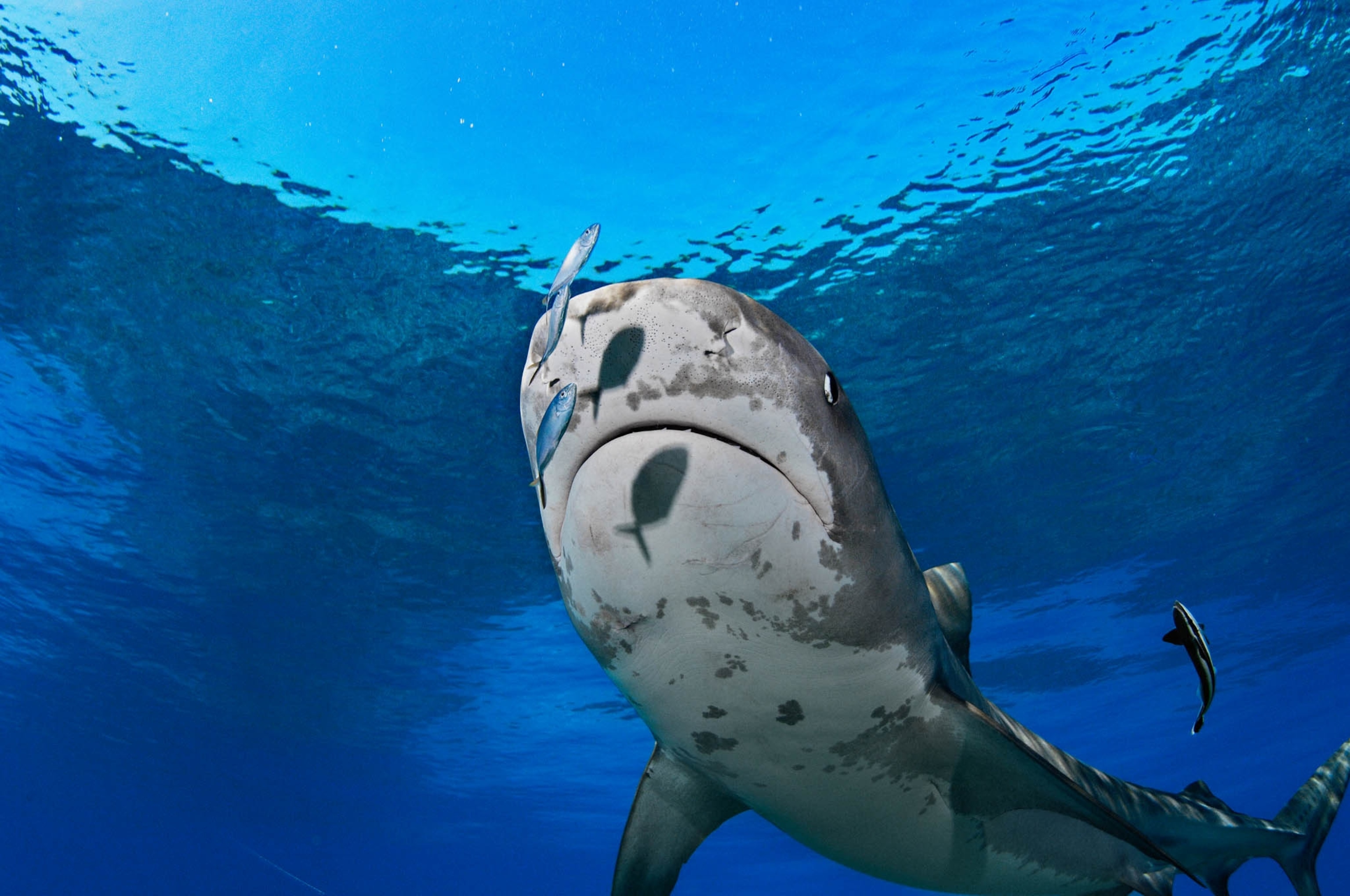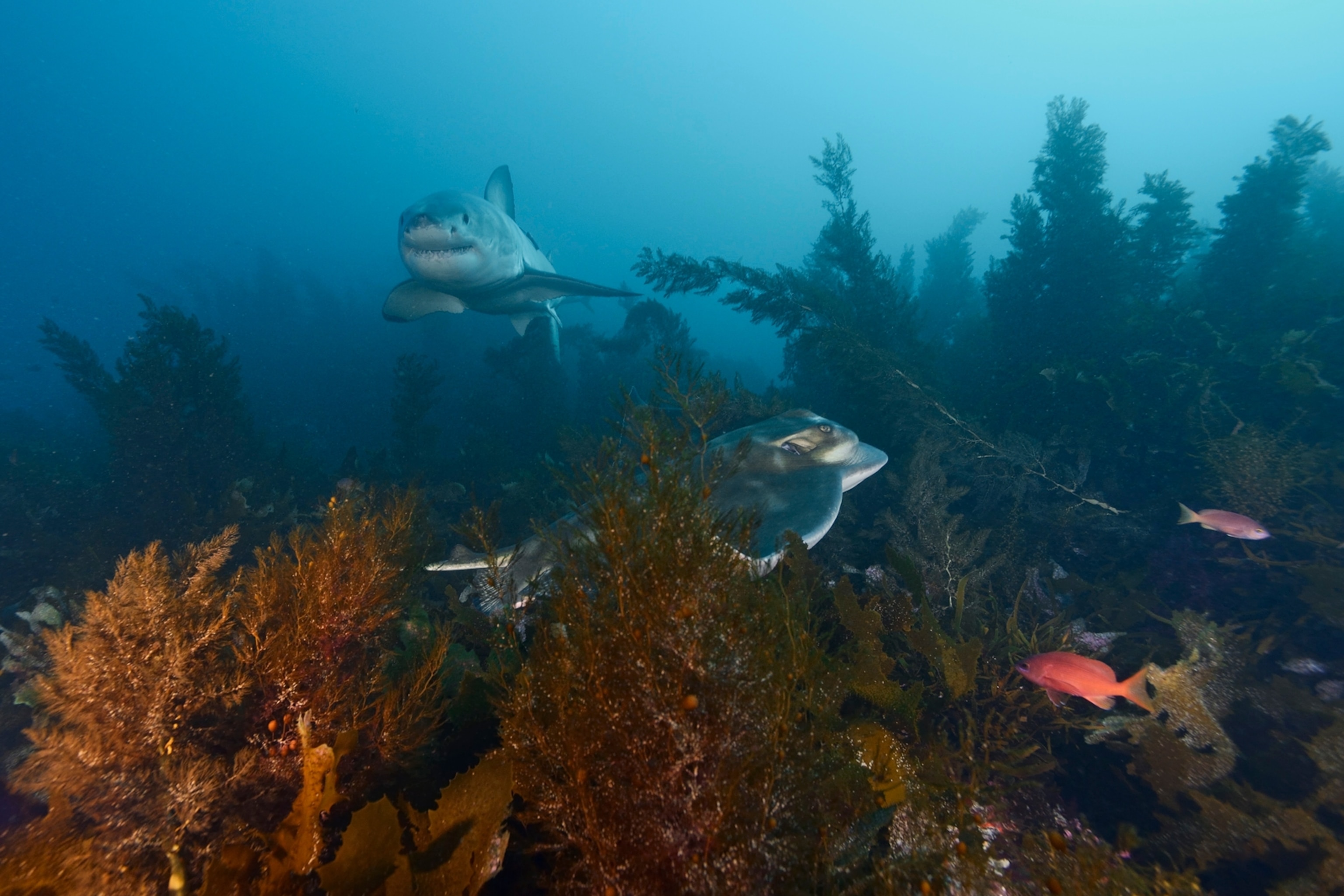There were only 61 confirmed unprovoked attacks by sharks on humans worldwide in 2004, according to the International Shark Attack File (ISAF). Only seven people people died: including two in Australia and one each in California, Hawaii, South Africa, and Brazil. (The location of the remaining fatality was not specified.)
Still, the threat, however small, is real. And the best way to prepare yourself for a possible shark encounter is to know how to avoid an attack, what to do if you are bitten, and how to help attack victims.
How to Avoid An Attack
• Stay away from the mouths of rivers after heavy rains, when freshwater fishes and other animals are swept out to sea.
• Swim clear of fishing boats. They often trail fish remains and blood, which can draw sharks.










• If you're bleeding, including menstruating, stay on the beach. Sharks can smell and taste even the smallest amount of blood from over a mile (1.6 kilometers) away and trace it back to its source.
• If you cut or injure yourself in the water, get out! Do not stay in the water with blood around you.
• Stay out of the water if fish blood or baitfish are present. In other words, steer clear of fishers.
• Avoid large groups of fish, seals, or sea lions. They all are prominent on the shark's menu.
• Stay away if you see large groups of dolphins and seabirds. They are attracted to the same food sharks eat. And don't make the mistake of thinking that if dolphins are present, there won't be any sharks around. Dolphins can be prey for large sharks.
• Stay away from dead animals in the water.
• Avoid areas where animal, human, or fish waste enter the water. Sewage attracts baitfish, which in turn attract sharks.
• Stay out of the water at dawn, dusk, and night, when some species of sharks may move inshore to feed on fish. Sharks are well equipped to locate prey even when visibility is poor.
• Avoid murky waters, harbor entrances, channels, and steep drop-offs. These areas are frequented by sharks.
• Do not wear high-contrast clothing (orange and yellow are said to be risky colors) or shiny jewelry (which may appear to be like fish scales). Sharks see contrast very well.
• Refrain from excessive splashing. Keep pets, which swim erratically, out of the water. Sharks are attracted to such activity.
• Leave the water quickly and calmly if a shark is sighted. Do not provoke, harass, or entice a shark, even a small one.
• If fish or turtles start to behave erratically, leave the water. They may be behaving like that because there is a shark in the area.
• If you feel something brush up against you, get out of the water to make sure that you have not been bitten. There have been reports that shark-bite victims often do not feel any pain.
• Swim, surf, or dive with other people. Sharks most often attack individuals.
• Don't wander too far from shore. Doing so isolates you and places you away from assistance.














• If you are diving and are approached by a shark, stay as still as possible. If you are carrying fish or other catches, release the catch and quietly leave the area.
What To Do If You're Attacked
• If attack is imminent, defend yourself with whatever weapons you can, advises the ReefQuest Centre for Shark Research. "Avoid using your [bare] hands or feet if you can avoid it; if not, concentrate your blows against the shark's delicate eyes or gills." A shark's snout is also said to be sensitive.
• If a shark actually gets you in its mouth, says ISAF's George Burgess, "I advise to be as aggressively defensive as you are able. 'Playing dead' does not work. Pound the shark in any way possible. Try to claw at the eyes and gill openings, two very sensitive areas."
• If bitten, try to stop the bleeding. Leave the water as efficiently, calmly, and swiftly as possible. While many sharks will not bite again, you cannot rule out a second attack.
• Get immediate medical attention, no matter how small the injury.
How to Help a Victim
• Remove the victim from the water as soon as possible.
• Even before you leave the water, begin controlling bleeding by pressing on pressure points or by applying tourniquets.
• Protect the victim from cold by wrapping him or her in a blanket to minimize heat loss.
• Once out of the water try not to move the victim unnecessarily. Call for medical help.
Related Topics
You May Also Like
Go Further
Animals
-
Charlotte, the 'virgin birth' stingray, has a diseaseCharlotte, the 'virgin birth' stingray, has a disease
-
See how billions of cicadas are taking over the U.S. this summerSee how billions of cicadas are taking over the U.S. this summer
-
Why are orcas ramming boats? They might just be bored teenagersWhy are orcas ramming boats? They might just be bored teenagers
-
These pelicans are starving to death—despite plenty to eatThese pelicans are starving to death—despite plenty to eat
-
The world's largest fish are vanishing without a traceThe world's largest fish are vanishing without a trace
Environment
-
2024 hurricane season forecasted to be record-breaking year2024 hurricane season forecasted to be record-breaking year
-
Connecting a new generation with South Africa’s iconic species
- Paid Content
Connecting a new generation with South Africa’s iconic species -
These images will help you see coral reefs in a whole new wayThese images will help you see coral reefs in a whole new way
-
What rising temps in the Gulf of Maine mean for wildlifeWhat rising temps in the Gulf of Maine mean for wildlife
-
He’s called ‘omacha,’ a dolphin that transforms into a man. Why?He’s called ‘omacha,’ a dolphin that transforms into a man. Why?
History & Culture
-
Think customer service is bad now? Read this ancient complaintThink customer service is bad now? Read this ancient complaint
-
The tragic backstory of one of the most haunted roads in AmericaThe tragic backstory of one of the most haunted roads in America
-
The missing heiress at the center of New York’s oldest cold caseThe missing heiress at the center of New York’s oldest cold case
-
When a people's stories are at risk, who steps in to save them?When a people's stories are at risk, who steps in to save them?
-
I wrote this article with a 18th century quill. I recommend it.I wrote this article with a 18th century quill. I recommend it.
-
Why this Bronze Age village became known as ‘Britain’s Pompeii’Why this Bronze Age village became known as ‘Britain’s Pompeii’
Science
-
How being the oldest or youngest sibling shapes your personalityHow being the oldest or youngest sibling shapes your personality
-
Tuberculosis is rising in the U.S. again. How did we get here?Tuberculosis is rising in the U.S. again. How did we get here?
-
Are ultra-processed foods as addictive as cigarettes?Are ultra-processed foods as addictive as cigarettes?
-
Epidurals may do more than relieve pain—they could save livesEpidurals may do more than relieve pain—they could save lives
Travel
-
What to eat in Lebanon, from flatbreads to layered dessertsWhat to eat in Lebanon, from flatbreads to layered desserts
-
This sunny German city should top your summer travel list
- Paid Content
This sunny German city should top your summer travel list -
7 things you need to know about European travel this summer7 things you need to know about European travel this summer
-
These Algerian communities live in the Saharan sand seasThese Algerian communities live in the Saharan sand seas



